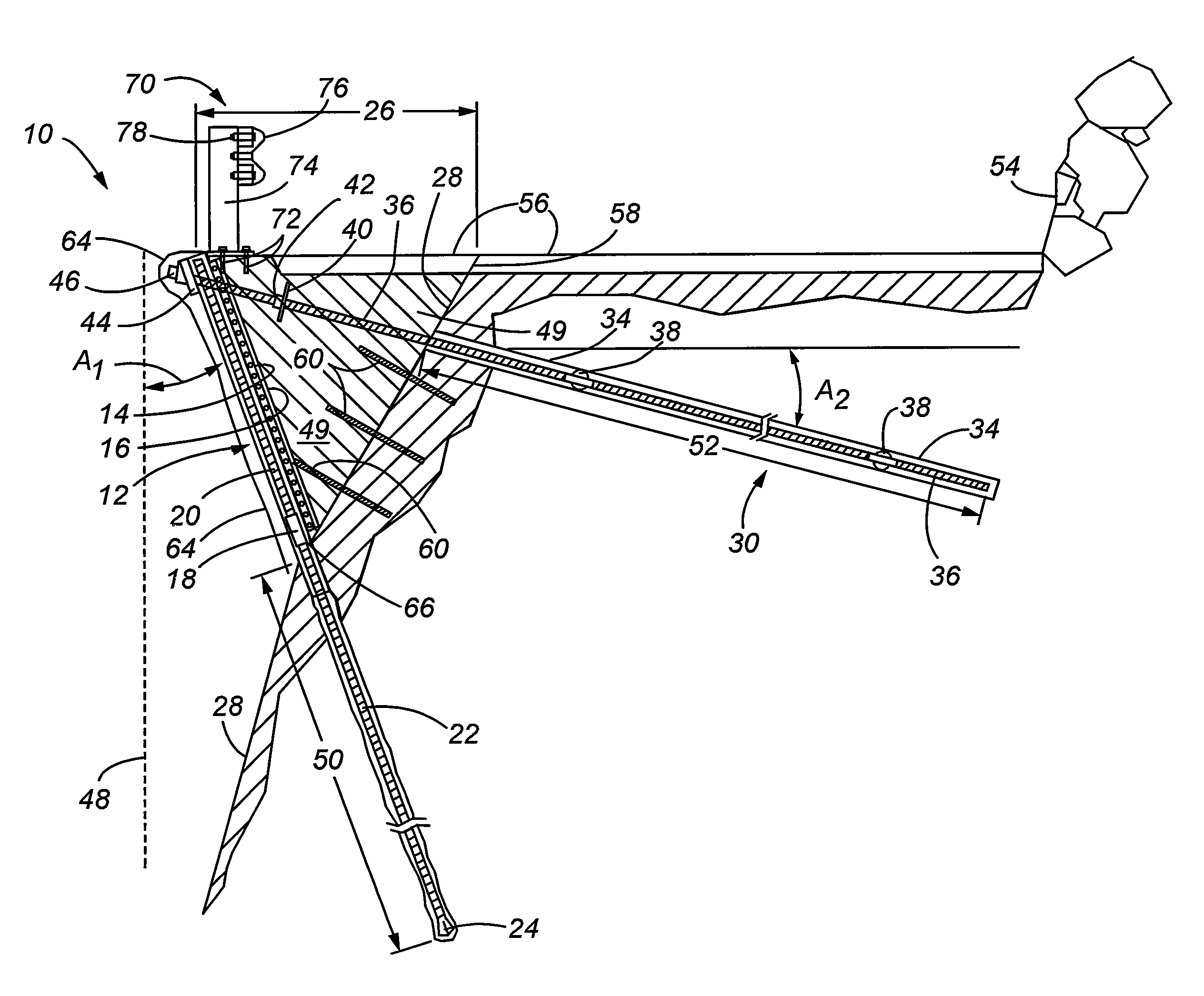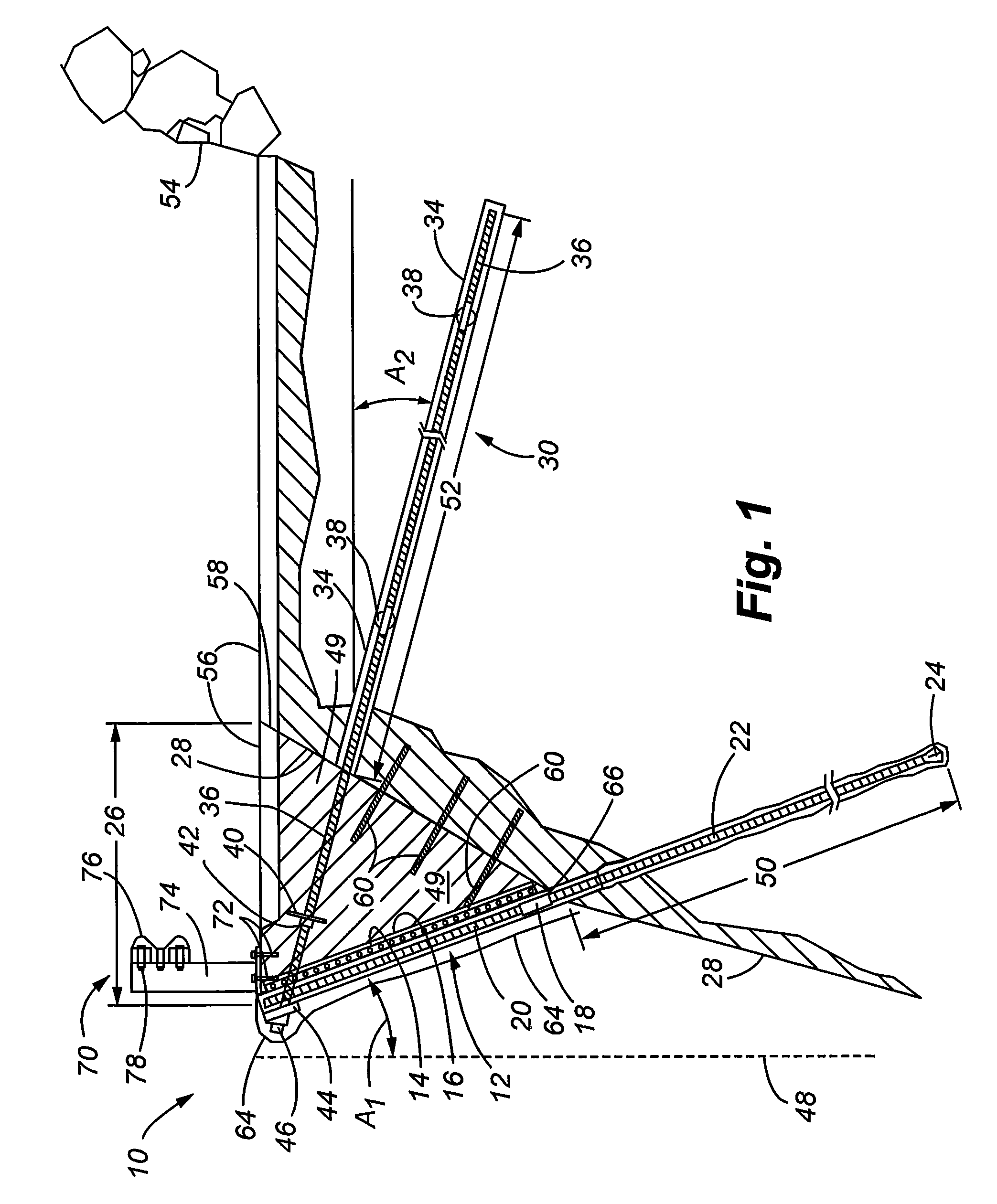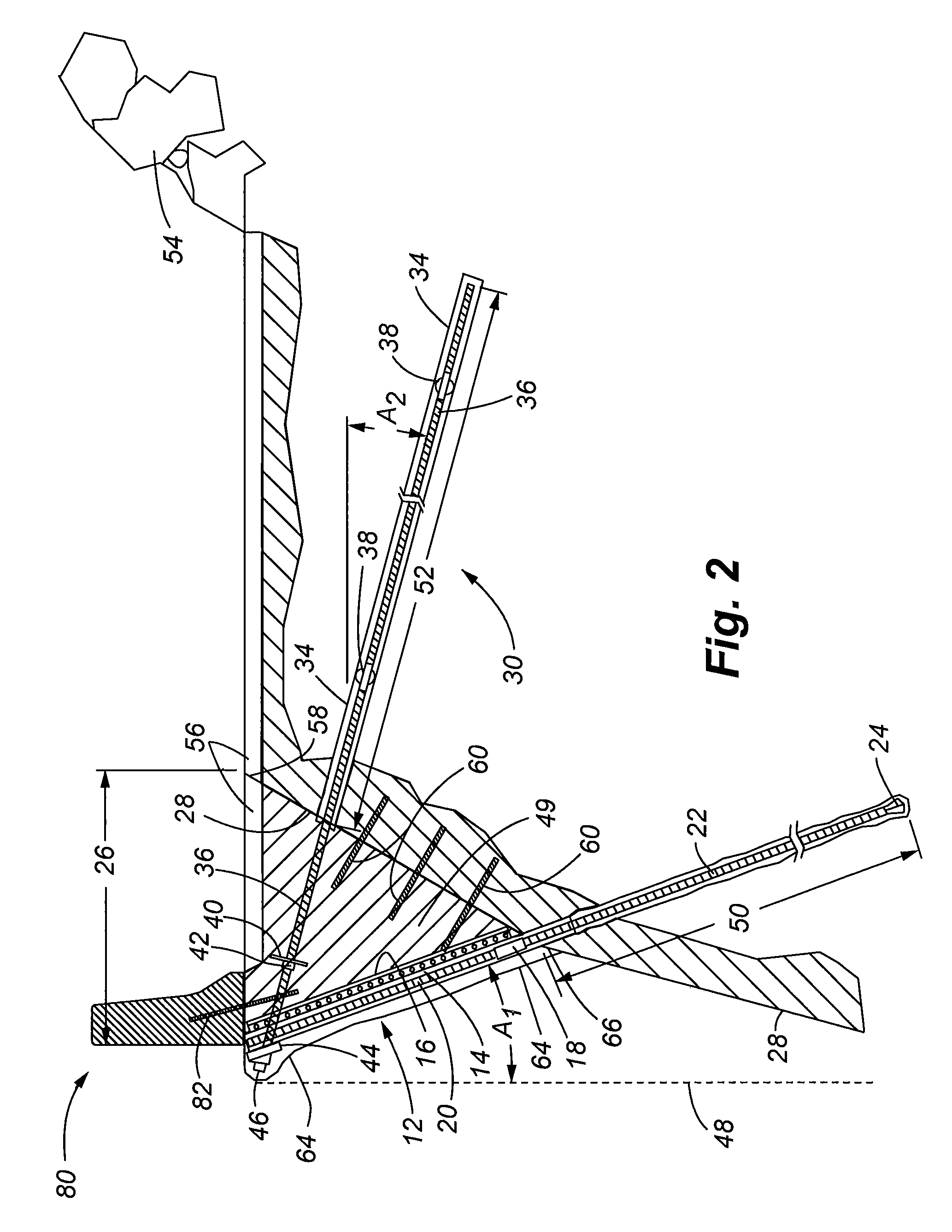System and method for increasing roadway width incorporating a reverse oriented retaining wall and soil nail supports
a reverse-oriented retaining wall and soil nail technology, applied in the direction of roads, roads maintainence, artificial islands, etc., can solve the problems of inability to widen the roadway, difficult roadway construction and maintenance, unstable earth surrounding or under a man-made structure, etc., and achieve the effect of increasing the roadway width
- Summary
- Abstract
- Description
- Claims
- Application Information
AI Technical Summary
Benefits of technology
Problems solved by technology
Method used
Image
Examples
Embodiment Construction
[0031]FIGS. 1 and 3 show the system of the invention in a first embodiment. The system includes a retaining wall 10 that is used to widen an existing roadway. A sloping surface 28 normally limits the width of the roadway on one lateral side of the road. The retaining wall components include a first set of soil nails 12 that are secured in the sloping surface 28. As best seen in FIG. 3, a plurality of the first set of nails 12 is spaced apart from one another along a length of the retaining wall 10. The angular extension of the soil nails 12 can be measured, for example, from a vertical angle A1. This angular extension generally defines the exterior face of the retaining wall as discussed further below. The first set of soil nails thereby form a first means for supporting the sloping surface.
[0032]Once the first set of nails 12 are installed, a wire mesh material 14 is placed over the exposed portions of the soil nails 12. The wire mesh is secured to the soil nails 12 using, for exam...
PUM
 Login to View More
Login to View More Abstract
Description
Claims
Application Information
 Login to View More
Login to View More - R&D
- Intellectual Property
- Life Sciences
- Materials
- Tech Scout
- Unparalleled Data Quality
- Higher Quality Content
- 60% Fewer Hallucinations
Browse by: Latest US Patents, China's latest patents, Technical Efficacy Thesaurus, Application Domain, Technology Topic, Popular Technical Reports.
© 2025 PatSnap. All rights reserved.Legal|Privacy policy|Modern Slavery Act Transparency Statement|Sitemap|About US| Contact US: help@patsnap.com



